Aalto Co-Educator Team (ACE)
All Aalto graduates should have the capability to analyse and tackle complex sustainability challenges especially related to their own field, and to grasp opportunities for making a change.
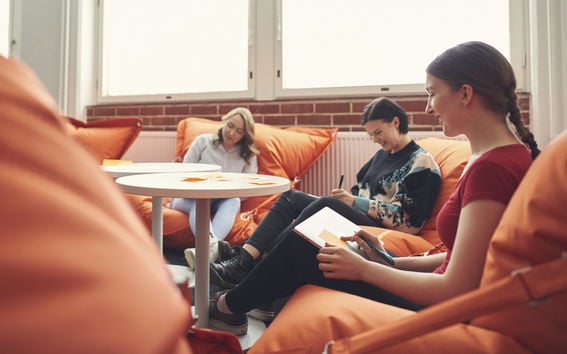
Solving complex global challenges requires a combination of radical creativity, sustainability and entrepreneurial competencies. Creative competencies can be honed by any student at Aalto University, not only those in the School of Arts, Design and Architecture. The Dean of the School of Arts, Design and Architecture, Tuomas Auvinen acknowledges in this piece that "creativity is not a monolithic concept" and that different approaches towards creativity across the university already exist.
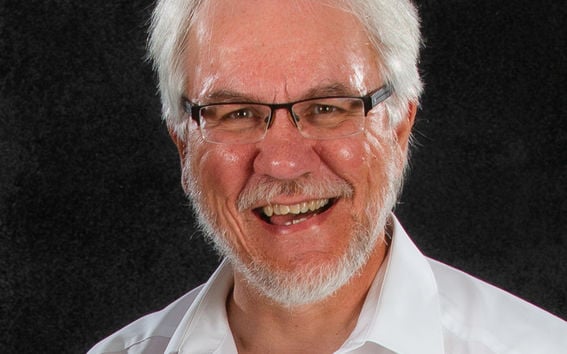
Håkan Mitts, entrepreneurial mindset expert in the Aalto Co-Educator team, reflects further on creativity as a process: "A lot of the creativity is very much a teachable systematic process. The measure of creativity isn't only how artistic you are. If for example there's a technical problem or business opportunity, can students do something creative that can address the situation? And in this scenario, it doesn't matter if you have artistic skills."
Creativity can be connected to problem-solving and goal-oriented thinking, where you establish a goal and take purposeful steps to create a desirable outcome within certain constraints. People from different backgrounds (business, design, technology) all bring important contributions to the creative process when working in multidisciplinary teams. This also makes the competencies from radical creativity a teachable part of courses.
But what does 'radical creativity' really mean? And what does it imply in teaching?
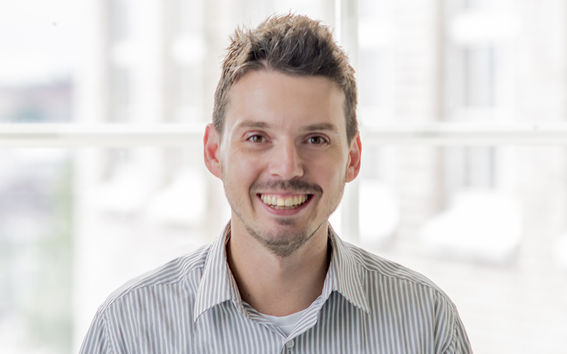
Paulo Dziobczenski, radical creativity expert in the Aalto Co-Educator team breaks it down as: "The creativity part is the problem-solving, which can be practised by Aalto students studying engineering, business, science or arts. It's about coming up with solutions for the task at hand, whether while at school or in their future careers. Then we have radical, which generates some confusion since people might say that creativity is always radical or unexpected. To me, the radical aspect is about thinking of solutions not for tomorrow but for the next 20, 50 or 100 years. It's about pushing boundaries, pushing towards big problems and big solutions. In relation to teaching, we want students to be thinking about what's going to happen in society ten years from now, challenges like climate change or creating carbon-neutral cities. These are huge challenges that can't be solved in six months."
Radical creativity encourages becoming comfortable with uncertainty and learning to navigate through it, as uncertainty is a part of the creative process. Failure is also a natural part of the creative process. Not being afraid to make mistakes and learning from failures is important when experimenting and risk-taking as well. For students, developing new ideas towards such complex problems, taking risks and experimenting are skills to build on as part of the creative process – these three are also competencies under radical creativity (shown in figure 1 below) as drafted by the Aalto Co-Educator team.
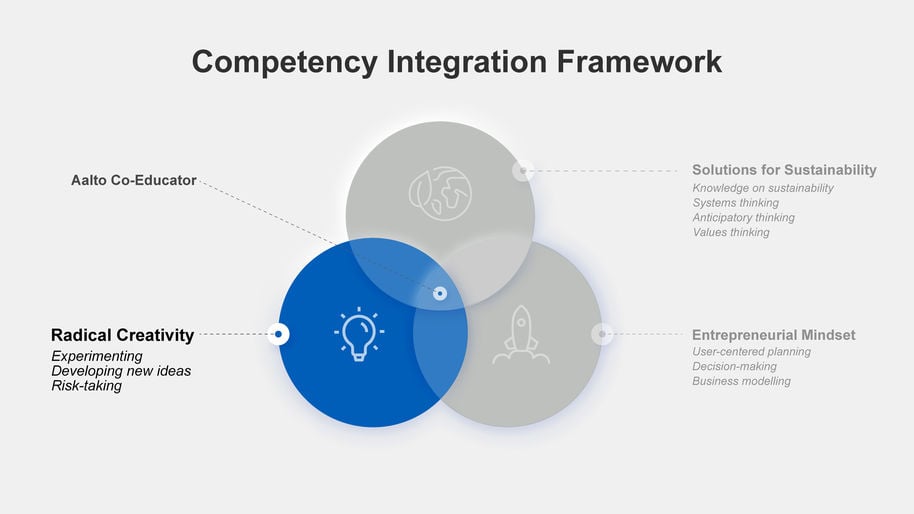
When shaping a sustainable future and navigating a path towards it, building on the creative competencies – experimenting, developing new ideas, risk-taking – is a way to drive this vision forward.
The Aalto Co-Educator team collaborates with our teaching faculty to integrate these creative competencies, as well as sustainability and entrepreneurial competencies, into their courses or programmes. To ease this integration process, the team developed a competency integration framework – read more about it here.
Riikka Mäkikoskela, Head of Radical Creativity, and Juha Juvonen, Head of IT Solutions for Research, offer their perspective on Radical Creativity and its importance in their article as, "we are all creative, and we use our innate creativity in new situations. By Radical Creativity, we at Aalto University mean a new creative activity that boldly pushes for fundamental change. Radical Creativity also emphasizes the flexibility to act in a variety of ways and to adapt our actions accordingly to achieve goals. The culture of radical creativity allows and supports creative questioning and "not-knowing”, and celebrates learning from exploration, experimentation, and failure. Creative approaches at Aalto provide diverse perspectives and skills to tackle topical challenges in a radically new way."
If you're looking to integrate creative competencies into your course or programme curriculum but are not sure how, contact the Aalto Co-Educator team at [email protected]. We're ready to collaborate with you!
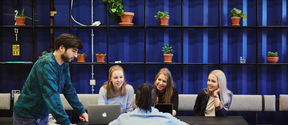
All Aalto graduates should have the capability to analyse and tackle complex sustainability challenges especially related to their own field, and to grasp opportunities for making a change.
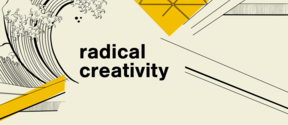
We build an outstanding creative community for new thinking.